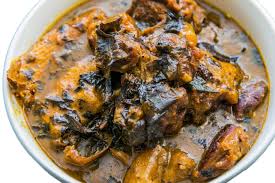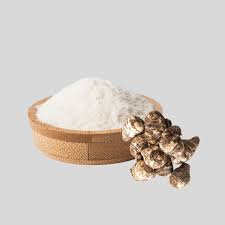What is Cocoyam? Cocoyam which is commonly known as taro is commonly used in place of yam in some countries such as Malaysia and Singapore while in some other parts of the continents and Africa at large has a name tag which they use in knowing them such as Kalo, dasheen, Edo, Madhumbe, Marope, Magogoya, Patra, Arbi or Godere.
Scientifically, it is named botanically Colocasia Esculenta, a tropical plant grown primarily for its edible corms.
The Igbo tribe has set this very tuber crop for their very nutritional use and it is well known to them as ‘Ede’ which they use in their soup preparations.
The Yorubas and Hausas do not have a name they call it but they refer to it as ‘Koko’.
It is primarily grown for the edible root known as cocoyam corm. The corms contain beneficial amounts of minerals such as magnesium, zinc, iron, manganese, and copper.
Cocoyam powder can be used to make bitter leaves, oha, or to thicken other ethnic soups.
They can be used to thicken baking and cooking soups like oha soup, nsala (white soup), and bitter leaf soup, among others.
Cocoyam has a high-quality nutritional profile that includes dietary fiber, antioxidants, and moderate amounts of minerals and vitamins.
How Cocoyam is Planted
Below are the methods of planting cocoyam;
(1) Land Preparation
Cutlass is used to clear the bush or vegetation and heaps, ridges, or mounds are made with hoes. It can be done by ploughing or harrowing.
(2) Climatic and Soil Requirements
Cocoyam requires a temperature of about 25°C – 30°C; rainfall of between 100cm and 180cm per annum; abundant sunshine and well-drained sandy-loamy soil rich in humus
Read Also: Sowing and Planting Practices for all Crops
(3) Method of propagation
Seed rate: One cocoyam corm cut into pieces; per hole
Planting Date: Early cocoyam is planted between November and December; while late yam is planted between March and April
Spacing: 90cm×100cm as sprouting occurs three to six weeks after planting.
Regular Weeding: This should be done regularly to control pests and reduce weed competition with crops for nutrients
Maturity period: Cocoyam matures in 8-12 months after planting
Harvesting: Dig the soil gently with a cutlass to remove the corms from the soil while holding the cocoyam leaves together.
Processing: The corms can be processed into cocoyam powder of consumed locally
Storage: They should be stored in a cool dry place away from pests that can destroy them.
Buying Guide: Cocoyam, when in season, is readily available in the open Nigerian markets. It is harder to find them in African food stores outside Nigeria.
When buying cocoyam, carry out a visual inspection of the corms. Press all parts of the corm to make sure that it is firm all over. Soft parts are the first indication that the cocoyam is going bad. Also, avoid the ones with bruises or cracks as much as possible.
Most bruises occur during harvest or transportation and may cause the affected parts to go bad.
Read Also: Copper Recycling Process Complete Beginners Guide
Health Benefits of Cocoyam (Cocoyam health benefits)
Cocoyam corms are rich in carbohydrates while the leaves are a good source of vitamins A and C and contain more protein than the corms.
Cocoyam as a soup thickener
Cocoyam is known to be a thickener in soups some Igbos cook it directly and name it “Ofe Ede” which is Cocoyam Soup.
They cook by pounding the cooked cocoyam corms while using palm kernel fruits to obtain the oil needed for the soup. They cook it mainly with beef and snails. This they enjoy with either Fufu or Eba.
This keeps the cultural heritage of the Igbos as most men hunger for these soups if well prepared. You too can have a taste of it one day.
Nutritional Benefits of Cocoyam Powder
(1) It is a great source of carbohydrates.
(2) It has dietary fiber.
(3) Contains more protein than the majority of tropical root crops.
(4) Thiamine, calcium, niacin, manganese, vitamin B, vitamin C, vitamin E, magnesium, copper, and riboflavin are also present.
Health Benefits of Cocoyam Powder
(1) Cocoyam is essential for immune system health. Keeps your digestive system in good shape.
(2) Aids in the easy passage of stools Aids in the increase of blood circulation
(3) It protects against heart disease, lung cancer, and oral cancer.
(4) It also helps to support the muscle and lower blood pressure.
Read Also: How To Make Soap: Natural Homemade Soap Recipe for Hand and Body
To process cocoyam for soup
Wash the cocoyam to remove any sand or mud.

Place in a pot of water and bring to a boil over high heat.

Boil the cocoyam until it can be easily pierced with a fork and squashed between the fingers. While the potatoes are still hot, drain them into a sieve and peel them.

1. Keep a bowl of cold water nearby so you can dunk the hot cocoyam before peeling it and cool off your ‘burning’ fingertips.
2. Pound the cocoyam in a mortar until it forms a smooth, thick paste.
3. If using a blender, place the cocoyam in the container according to its capacity and add enough water to get the blades moving. Grind until a smooth paste forms.
4. You don’t need to add water to the food processor; it comes out smooth and thick, like cocoyam pounded with a mortar and pestle.
5. If you use a cake mixer, it will take longer and make the cocoyam light and fluffy, but it will still work.
Use to make delicious Onugbu/bitter leaf soup, oha (ora) soup, ugu soup, and other dishes.
Read Also: How To Raise Chickens – The Simple Secrets To A Great Backyard Flock





